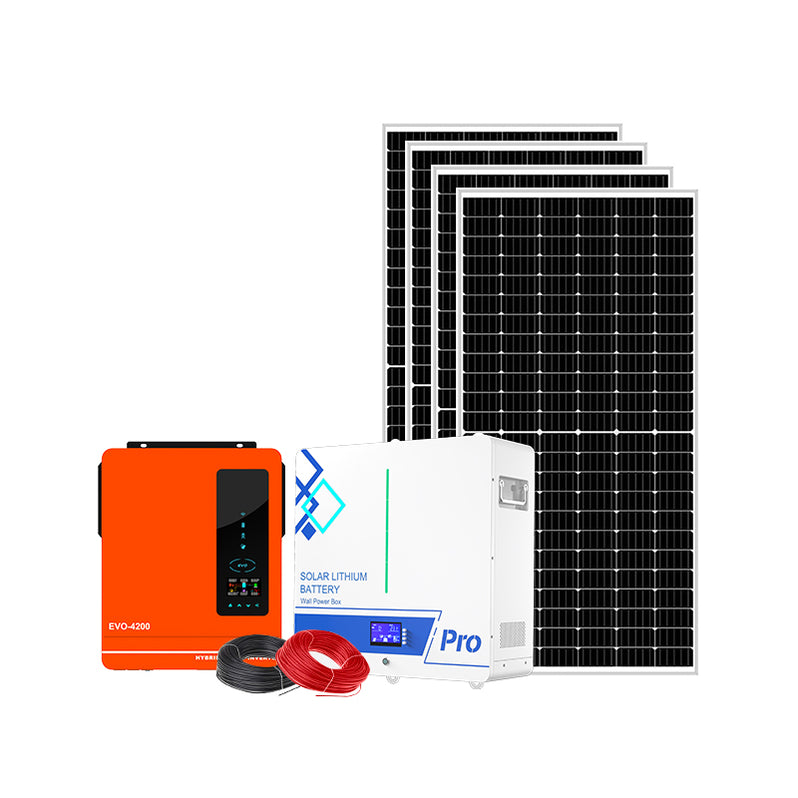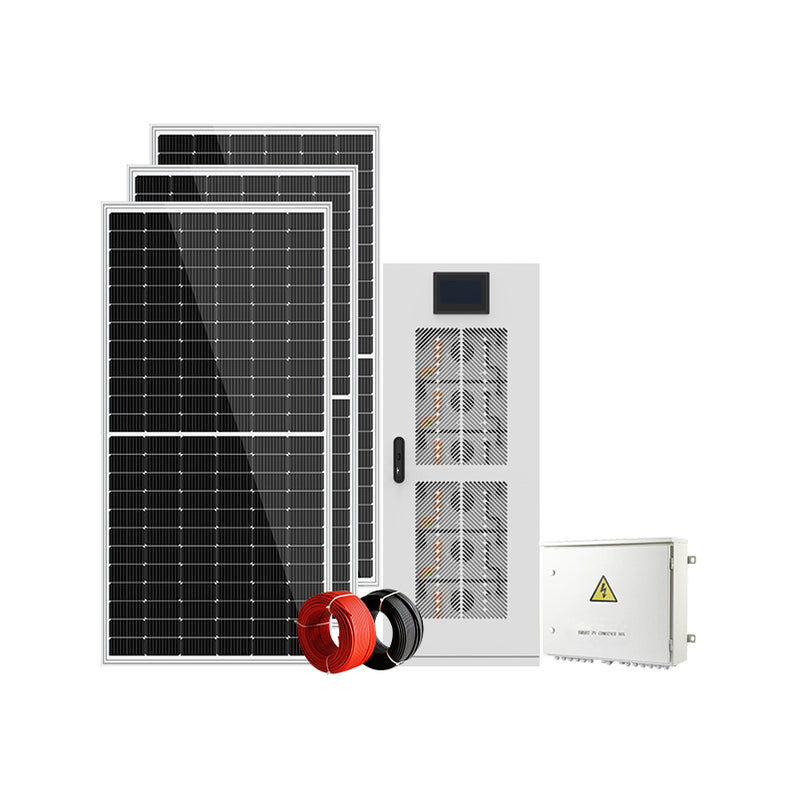Transitioning to solar power is an excellent way to lower your electricity costs and reduce your environmental impact. This guide offers a comprehensive overview for anyone considering making the switch to solar, covering everything from the basic technology to the financial incentives available.
What is Solar Power and How Does It Work?
Solar power is the energy from the sun that is converted into usable electricity. This conversion happens through a process called the photovoltaic (PV) effect. According to Anern, solar panels are made up of many small units called solar cells, which are typically made of silicon. When sunlight hits these cells, it creates an electric current.
This generated electricity is in the form of direct current (DC). However, most homes and businesses use alternating current (AC). That's where an inverter comes in. An inverter is a crucial component that converts the DC electricity from the solar panels into AC electricity, making it ready to power your appliances and devices. Any excess electricity can be stored in batteries for later use or fed back into the utility grid.
The Growth of Solar Energy
The solar industry has seen remarkable growth. In the last decade alone, the industry has expanded by an average of 25% annually. This growth has been accompanied by a 43% drop in solar prices, making the technology more affordable than ever. The Solar Energy Industries Association (SEIA) reports over 5.1 million PV installations in the U.S., capable of powering over 35.8 million homes.
Components of a Solar Power System
A complete solar power system is more than just the panels you see on rooftops. According to GoGreenSolar.com, the essential components of a residential solar setup include:
- Solar Panels: These capture sunlight and convert it into DC electricity. They are made of photovoltaic cells, typically silicon-based.
- Inverter: This device converts the DC electricity from the panels into usable AC power for your home.
- Racking and Mounting: This is the framework that secures the solar panels to your roof or the ground.
- Batteries (Optional): Batteries store excess energy for use when the sun isn't shining, such as at night or on cloudy days. This is crucial for off-grid systems.
- Charge Controller: In systems with batteries, a charge controller manages the charging process to prevent overcharging and extend battery life.
Types of Solar Panels
There are a few main types of solar panels available on the market, each with its own set of advantages and disadvantages.
- Monocrystalline Solar Panels: These are the most efficient type of solar panel, with efficiencies often exceeding 20%. They are made from a single silicon crystal, which gives them their characteristic black color. While they are the most efficient, they are also the most expensive.
- Polycrystalline Solar Panels: These panels are made from multiple silicon fragments melted together. They are typically less efficient than monocrystalline panels (around 15-17% efficiency) but are more affordable. They have a blue, speckled appearance.
- Thin-Film Solar Panels: These panels are made by depositing thin layers of photovoltaic material onto a substrate. They are lightweight, flexible, and the least expensive, but also the least efficient, with average efficiencies around 11%.
Cost and Financial Incentives of Going Solar
The cost of installing solar panels can vary based on your location, the size of the system, and the equipment you choose. In 2025, the average cost for a 7.2 kW residential solar installation in the United States is about $21,816 before any incentives. This price includes not just the panels but also the inverter, racking, wiring, and installation labor.
Financial Incentives
To make solar more affordable, various government incentives are available:
- Federal Solar Tax Credit: Homeowners can claim a tax credit for a percentage of the cost of their solar system. According to EnergySage, the federal solar tax credit allows you to deduct 30% of your solar panel system's cost from your federal income taxes.
- State and Local Rebates: Many states, municipalities, and utility companies offer additional rebates and incentives to encourage the switch to solar energy.
Financing Options
If paying upfront isn't feasible, several financing options can help you go solar with little to no initial cost. These include:
- Solar Loans: These allow you to own your system and pay for it over time. Loan payments are often less than a typical utility bill.
- Solar Leases and Power Purchase Agreements (PPAs): With these options, a third party owns and maintains the solar panel system on your property. You then pay a fixed monthly rate for the electricity produced, which is typically lower than what you would pay your utility company.
Benefits of Solar Energy
Switching to solar power offers a wide array of advantages:
- Reduced Electricity Bills: By generating your own power, you can significantly lower or even eliminate your monthly electricity bills.
- Environmental Impact: Solar power is a clean, renewable energy source that reduces your carbon footprint and helps combat climate change.
- Increased Property Value: Homes with solar panel systems often sell for more than homes without them. A study by Berkeley National Laboratory found that home buyers are willing to pay a premium for a house with an average-sized solar array.
- Energy Independence: Paired with battery storage, a solar system can provide power during grid outages.
- Low Maintenance: Solar panels have no moving parts and require very little maintenance, mainly just periodic cleaning.
The Installation Process
Once you've decided to go solar, the installation process typically involves a few key steps.
Finding a Reliable Installer
Choosing a competent and trustworthy installer is crucial for a successful solar project. Here are some tips for finding the right professional:
- Check Credentials: Look for installers with certifications from organizations like the North American Board of Certified Energy Practitioners (NABCEP).
- Verify Experience: A good rule of thumb is to work with installers who have at least three years of experience.
- Read Reviews and Ask for References: Look up customer reviews online and ask the installer for references from previous clients.
- Compare Quotes: Get at least two to three quotes from different installers to compare costs, equipment, and warranties.
Installation Day
The actual installation typically takes one to three days, depending on the system's size and complexity. According to Residential Solar Panels, the installation team will mount the panels, connect the wiring, and install the inverter. After the physical installation, the system will need to be inspected by local authorities before it can be connected to the grid and begin generating power.
System Maintenance
Solar panel systems are remarkably low-maintenance. The primary task is to keep the panels clean from dirt, dust, and other debris that can obstruct sunlight and reduce efficiency. For most homeowners, a simple cleaning with a garden hose two to four times a year is sufficient. It is recommended to clean the panels in the early morning or evening when they are cool. Many modern solar systems also come with monitoring apps that allow you to track your system's performance and identify any potential issues early on.
Understanding Net Metering
Net metering is a billing mechanism that allows you to get credit for the excess electricity your solar panels generate and send back to the grid. When your system produces more power than you're using, your electric meter essentially runs backward. You are then only billed for your "net" energy consumption, which is the difference between the energy you consume from the grid and the excess energy your system sends to the grid. This is a key policy that makes solar a financially attractive investment for many homeowners.







Leave a comment
All comments are moderated before being published.
This site is protected by hCaptcha and the hCaptcha Privacy Policy and Terms of Service apply.